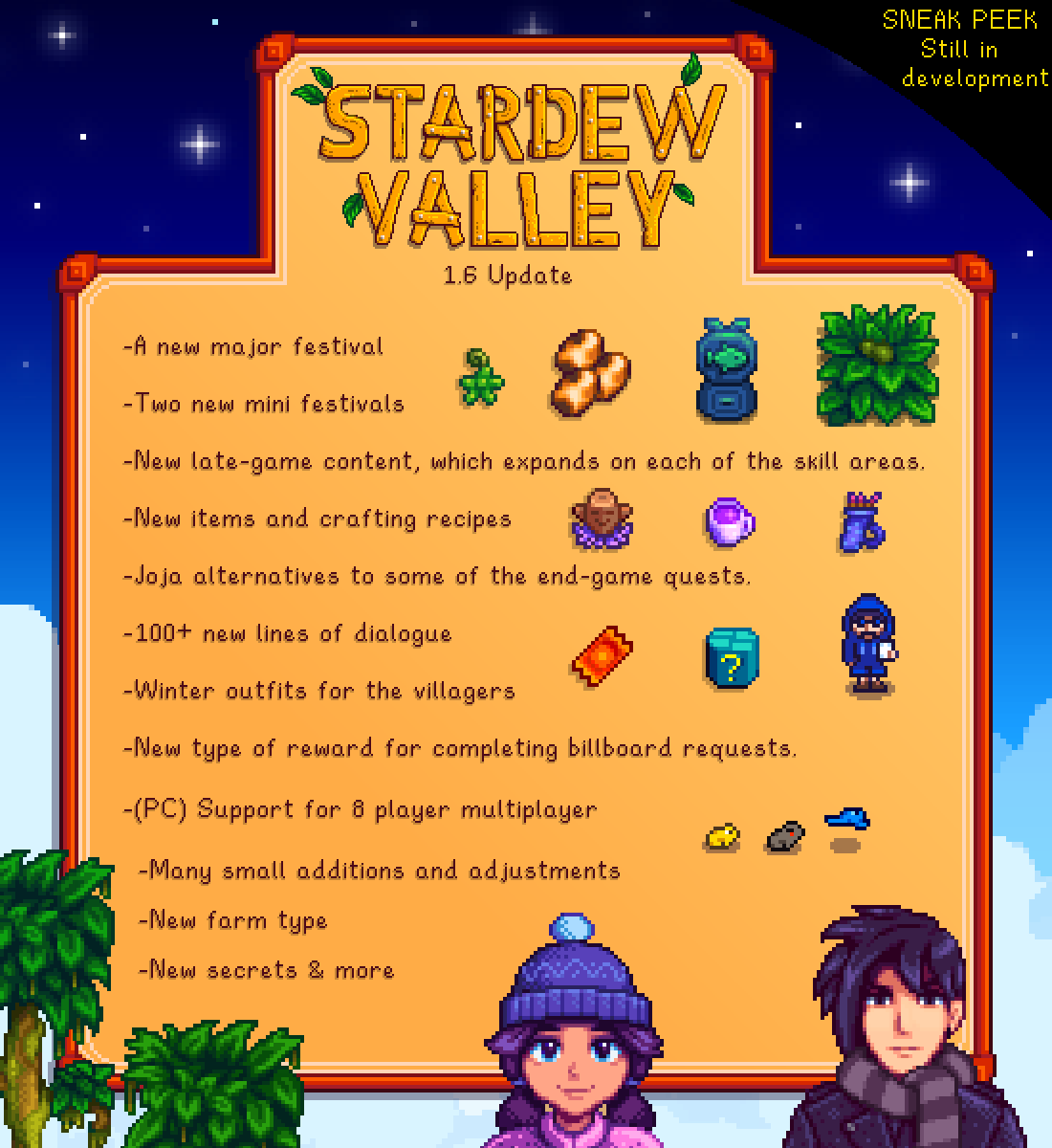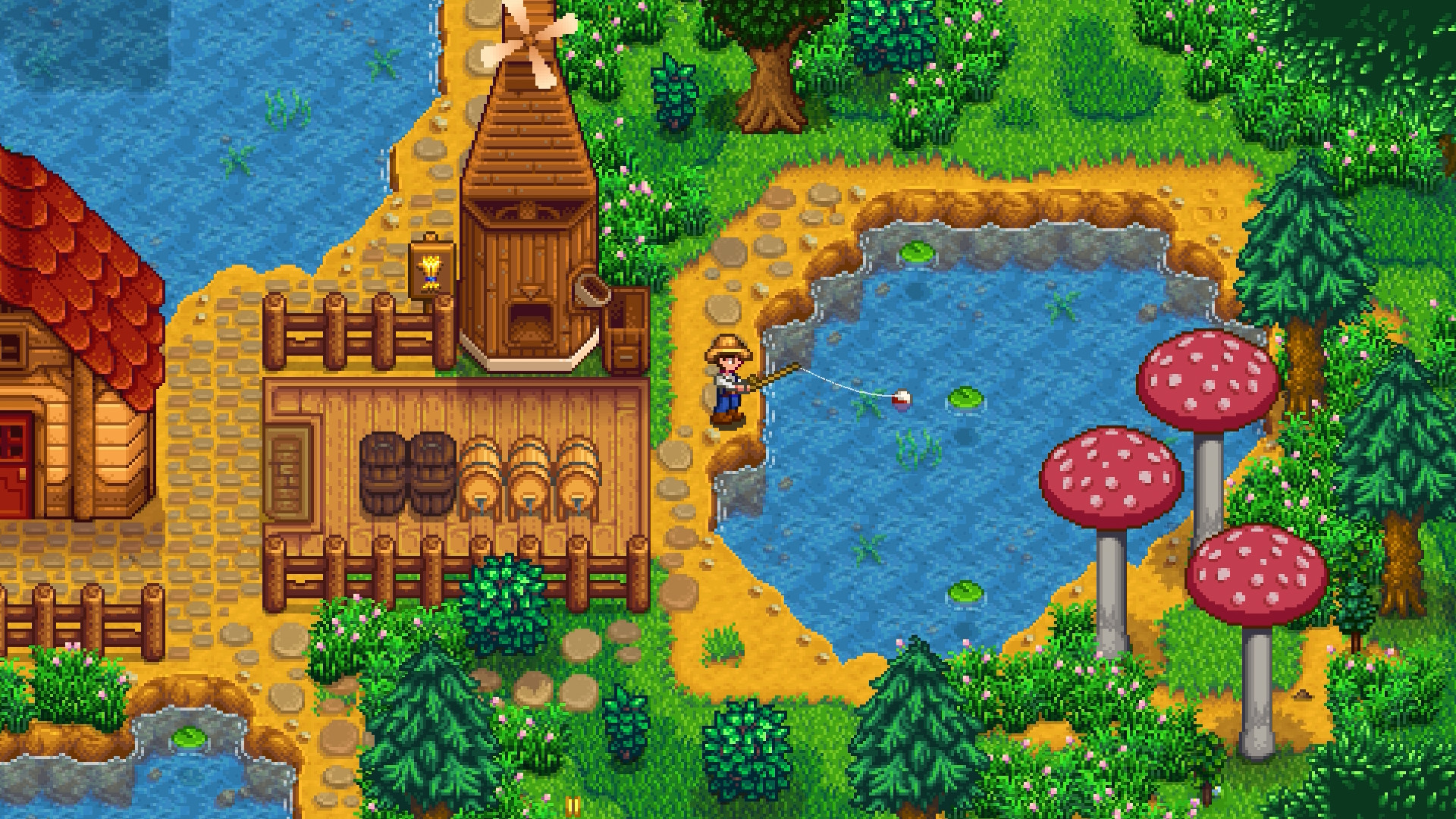Blog 3 - User Testing
After the discussion of surveys and user testing on Wednesday, my first thought was to look back on one of my favorite games, Stardew Valley. Probably one of the most well-known facts about the game is that the creator, Eric Barone (aka ConcernedApe), created the initial version entirely on his own. From the assets to the music to the code itself, he built the entire farming simulator, which was based on the iconic Harvest Moon series. Apart from creating Stardew Valley, Barone was also known for how much he cared about players of the game, personally looking at and debugging the save files of multiple players when issues popped up in the first releases the game. To this end, as the game has grown and received many updates over the years, Barone has also been very active in collecting feedback about the game from players.
Between surveys, Twitch interactions, and blogposts, Barone interacts with Stardew Valley players and fans by posting anything from questions about what players would like to see in coming updates to spoilers about upcoming features.

One aspect of surveys that Barone does particularly well is that he makes sure to address the concerns of multiple subgroups of his audience. Since Stardew Valley has gained traction, it has attracted more than just the casual player. From seasoned players who are trying to obtain all of the achievements in the game (or start multiple files each focused on a specific aspect of the game) to speedrunners who compete at different levels of completion, Stardew Valley players have a variety of goals, and thus a variety of needs that may be incredibly small or niche. In the spirit of this, Barone has reached out to streamers who are well-known for pushing the limits of the game to ask what they would like to see from future updates, and he does incorporate their responses. For speedrunning, one example of an update is the new ability to buy goods in larger stacks (i.e. since the 1.5.5 update, players can buy in stacks of 25 instead of the previous limit of 5). This makes it much easier to quickly buy a large amount of resources, which is a common step in many speedruns. In addition, he recently sent a message surveying speedrunners again for further input on an upcoming update.

In reaching out to the Stardew Valley community, Barone also makes sure to address common concerns or annoyances that players might have in the game. For example, in that same 1.5.5 update, Barone added the ability to nudge pets out of the way when they block a player's path, buy back items sold by accident, and move buildings onto artifact spots, which would previously require the player to return home to dig them up before going back to the interface for moving buildings. He also made an update so that grass placed using grass starters during winter no longer disappears, which makes playing much more satisfactory for those who love to decorate and customize the look of their farms. Overall, each new update brings not only new chapters to the game, but also an abundance of quality-of-life changes that enhance the experience of playing the game, and an enormous part of this is due to user feedback.

But what stands out most, possibly even more than Barone's attention to detail in responding to players and addressing their asks, is the considerable community that has been built around Stardew Valley. Because of the grassroots beginnings of the game and Barone's engagement with the community from the start, it is an entirely normalized occurrence to see Barone asking the community for input or interacting with livestreamers about the game, and this only adds to the experience of playing Stardew Valley and being able to relate to others who love the game. In this sense, it seems that there are many benefits to engaging at a very genuine level with users, and in some cases, like with Stardew Valley, it can build into an entire community that works with creators to make the best possible product and experience for everyone.
Lecture Notes (10/18)
- heuristic evaluations
- cognitive walkthrough of ATM use (go through asks & actions of the process; ask questions about how easily a user can do something)
- can be very helpful to put your app in front of new users (will pretty much always learn something new about your design)
- ways to show app to new users: surveys, A/B testing, user studies (paper prototypes)
- surveys: easy to construct, can be purely text or include screenshots/mockups; survey design can also be challenging, though
- A/B testing: 50% of users see version A, 50% see version B, compare results; useful but there is a slippery slope of fixating on things that are too niche, (i.e. which shade of blue out of 41 shades performs marginally better)
- user study: have participants use the design (i.e. with paper prototypes or a prototype of the app); prompt people to talk through what they are thinking and state their questions and what they read; do not intervene; before you do user studies/tests, fill everything with realistic content instead of using dummy content